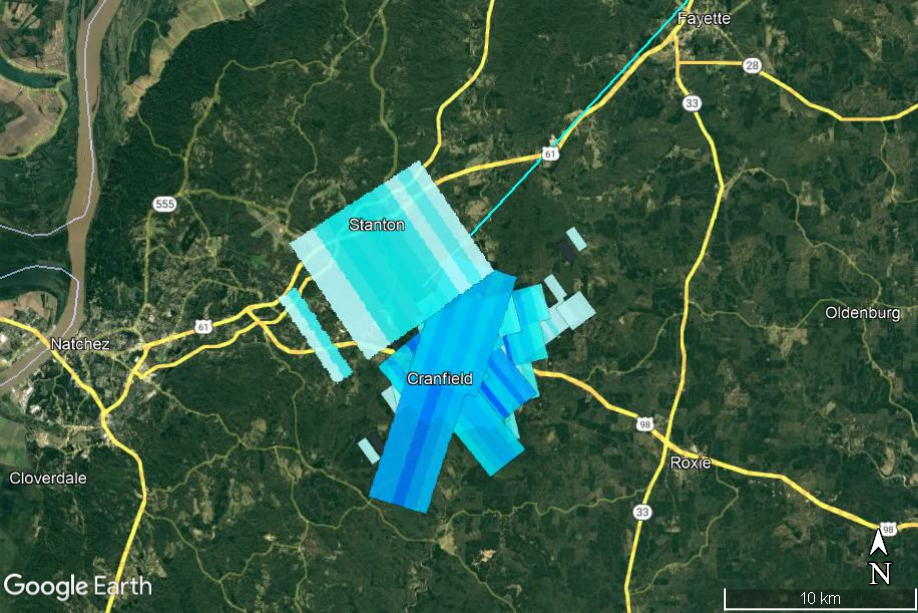DATE/TIME4/27/2022 @ 1303 UTC4/27/2022
|
LAT/LONG31.553773 • -91.181204
31.553773
|

This meteorite fall was a daytime fireball that occurred at 8:03 AM local time on 27 April 2022, or 1303 UTC. The fireball was a bright daytime fireball and 60 eyewitnesses reported it to the American Meteor Society across MS, LA, AL, and AR. Many eyewitnesses reported hearing sonic booms from the falling meteorites.
Meteorites have been recovered from this event. As of this writing, at least ten meteorites ranging in mass from ~1 to almost 200g have been found within the bounds of the modeled strewn field image. Preliminary examination indicates it is an L type brecciated ordinary chondrite. The first meteorite was recovered by Linda Welzenbach Fries at 2:45 PM on Saturday, 30 April. She found the meteorite one hour after arriving on site.
This meteorite is classified as an H3-5 ordinary chondrite. There are two repositories, XSpace (Lunar Planetary Institute, Houston, TX) and Cascadia Meteorite Laboratory (Portland, OR).
This event is recorded as American Meteor Society event number 2591 for year 2022. Signatures of falling meteorites can be found in imagery from at least four nearby weather radars. In the NEXRAD weather radar network operated by NOAA, the KDGX (Jackson Brandon MS), KMOB (Mobile AL), KPOE (Fort Polk LA), and KLCH (Lake Charles LA) radars record signatures of falling meteorites.
The first appearance of falling meteorites on radar occurs at 13:04:30 UTC and 11,257 m above sea level (ASL) in the 1256 UTC data set for the KDGX radar in the 3.96 degree elevation radar sweep. Signatures consistent with falling meteorites appear in a total of at least 11 radar sweeps from the four radars, with a final signature appearing at 13:09:16 UTC. Total elapsed radar observation of falling meteorites is 4 minutes and 44 seconds.
